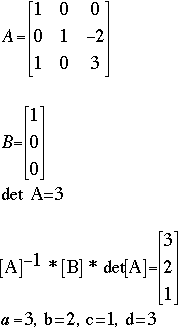

The reactant that produces a lesser amount of product is the limiting reactant.Use stoichiometry for each individual reactant to find the mass of product produced.Convert the given information into moles.Balance the chemical equation for the chemical reaction.If necessary, calculate how much is left in excess of the non-limiting (excess) reactant.Īpproach 2 (The "The Product Method"): Find the limiting reactant by calculating and comparing the amount of product that each reactant will produce.


Use the amount of limiting reactant to calculate the amount of product produced.Compare the calculated ratio to the actual ratio. Calculate the mole ratio from the given information.Convert all given information into moles (most likely, through the use of molar mass as a conversion factor).Determine the balanced chemical equation for the chemical reaction.This section will focus more on the second method.Īpproach 1 (The "Reactant Mole Ratio Method"): Find the limiting reactant by looking at the number of moles of each reactant. Another way is to calculate the grams of products produced from the given quantities of reactants the reactant that produces the smallest amount of product is the limiting reactant (Approach 2). One method is to find and compare the mole ratio of the reactants used in the reaction (Approach 1). There are two ways to determine the limiting reactant.
BALANCE EQUATION CALCULATOR HOW TO
How to Identify the Limiting Reactant (Limiting Reagent) A crucial skill in evaluating the conditions of a chemical process is to determine which reactant is the limiting reactant and which is in excess. The reactant you run out of is called the limiting reactant the other reactant or reactants are considered to be in excess. Above these molecules is the label, “After reaction,” and below these molecules is the label, “8 H C l and 2 H subscript 2.”Ī similar situation exists for many chemical reactions: you usually run out of one reactant before all of the other reactant has reacted. There are also two molecules each consisting of two white spheres bonded together.

Above these molecules is the label, “Before reaction,” and below these molecules is the label, “6 H subscript 2 and 4 C l subscript 2.” To the right of the reaction arrow, there are eight molecules each consisting of one green sphere bonded to a smaller white sphere. There are also five molecules each consisting of two smaller, white spheres bonded together. To the left of the reaction arrow there are three molecules each consisting of two green spheres bonded together. There is a reaction arrow pointing to the right in the middle. The figure shows a space-filling molecular models reacting. This illustration shows a reaction in which hydrogen is present in excess and chlorine is the limiting reactant. \( \newcommand\): When H 2 and Cl 2 are combined in nonstoichiometric amounts, one of these reactants will limit the amount of HCl that can be produced.


 0 kommentar(er)
0 kommentar(er)
